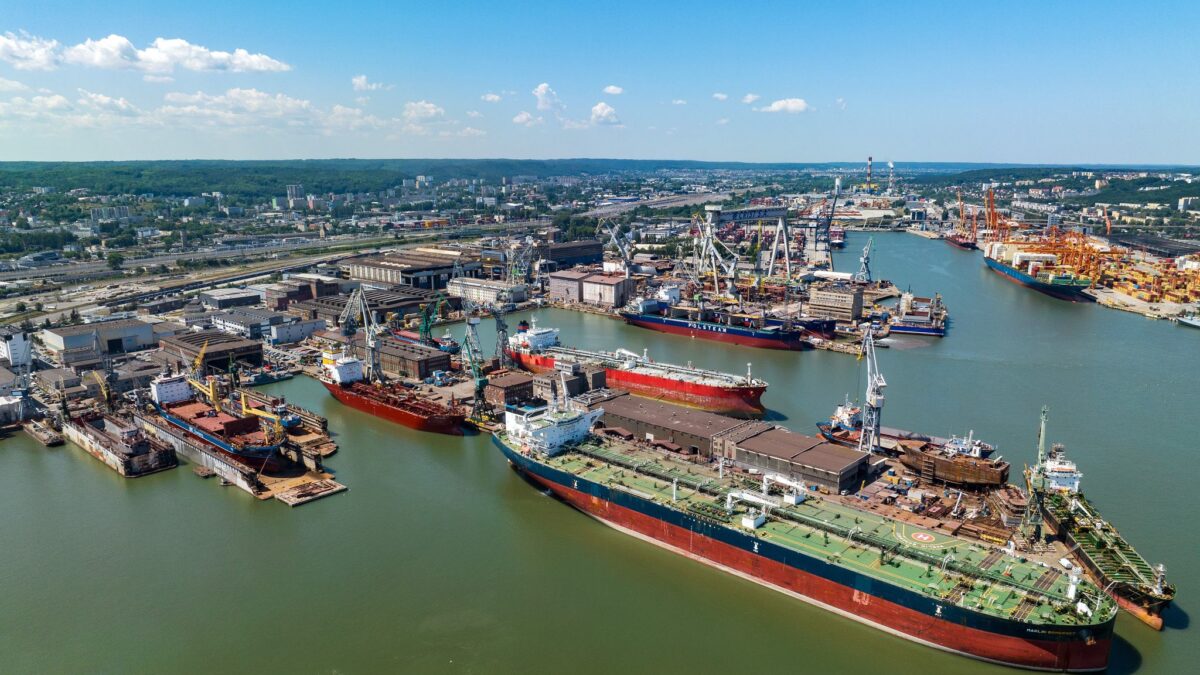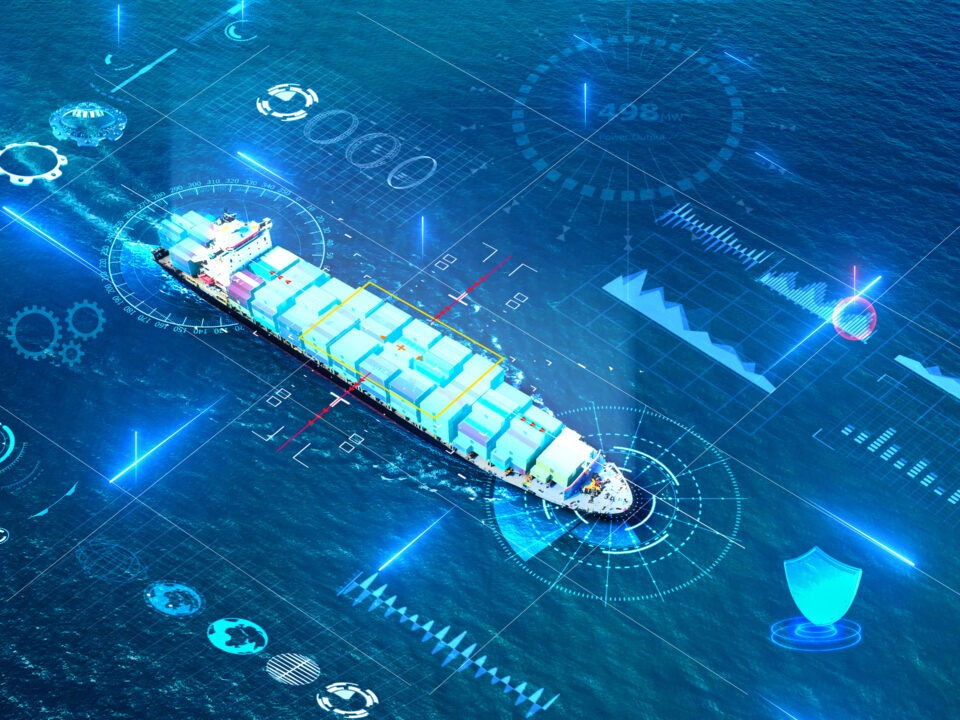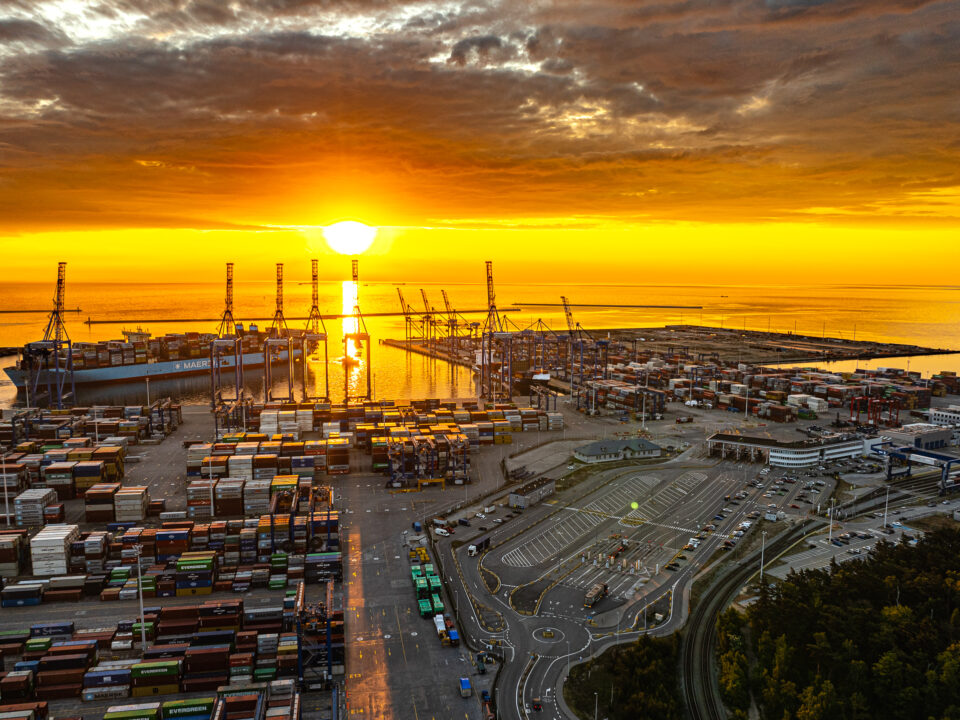
H1 in Containers
13 August 2025
Decarbonization of the global shipping by IMO – time for decisions!
17 September 2025The current potential of the European shipbuilding industry includes 300 shipyards, 28,000 companies producing equipment and cooperating with shipyards, and the sector’s annual output is worth 128 billion euros. It employs 1.1 million high-level professionals, and the value of the industry’s R&D spending is 9% of its annual turnover. This is the data presented by SEA Europe, an organization of representatives of the European shipbuilding industry.
Nevertheless, it continues to lose the competition with China, whose share of the shipbuilding market currently stands at 50% in terms of total order portfolio and 62% in the case of orders placed last year. Interestingly, most of the contracts for new ships from Chinese shipyards were signed by European shipowners, while Chinese shipowners account for only 13% of the order portfolio. Besides, Chinese shipowners order ships almost exclusively from their country, as do South Korean shipowners. In Japan, the situation is more diverse, but still with a preponderance of local orders, while 91% of orders from Europe go outside our continent.
SEA Europe points out that the situation of the European shipbuilding industry has been deteriorating steadily since the 1970s, and accelerated around 2000. The main reason for this was and continues to be the fact that the European Union has a horizontal approach to the economy, which means that an extremely complex organism such as a shipyard is treated on the same basis as, for example, a shoe factory. Meanwhile, in China or South Korea, the shipbuilding industry is treated as a strategic sector, which has resulted in these countries introducing a system of incentives and protections for the industry. Europe, wanting to rebuild its shipbuilding industry, must take similar steps.
As a result, work has begun at the EU level on a European strategy for the shipbuilding industry. From SEA Europe’s perspective, it remains crucial to maintain its leadership in the construction of high-tech vessels, in the manufacture of marine equipment, in war production, and to regain certain markets, such as short sea vessels, which are key to EU internal trade. This also applies to Polish shipyards, whose specialty is vessels using modern and environmentally friendly propulsion technologies.
The most recent challenge in this regard is the construction of a series of 3 ro-pax ferries (with an option for 4) with LNG propulsion in the Remontowa Shipyard in Gdańsk, a member of Remontowa Holding, ordered by the Polish Ferries Company, whose shareholders are the State Treasury and the Polish Steamship Company. They will sail in the colors of Unity Line and Polish Baltic Shipping. The first was launched at the end of October 2023, while the second ferry took to the water at the end of 2024. The contract for the construction of the vessels was signed on November 26, 2021, and production of the first vessel began in late October 2022. The ferries being built at GSR will be 195.6 meters long, 31.6 meters wide and have a cargo line measuring 4,100 meters. They will be powered by 4 dual-fuel LNG engines with hybrid assistance. Instead of conventional propellers, each ferry will be equipped with 2 azimuth thrusters at the stern and 2 thrusters at the bow, improving maneuvering in ports. The first ferry is expected to go into service this year.
In addition, Remontowa Shipbuilding is building a modern hybrid-powered passenger-car ferry for Norwegian shipowner Torghatten Nord AS. A fully equipped modern two-way ferry for sailing in the Norwegian fjords will be built in Gdansk. The vessel will operate the Stornes-Bjørnerå connection. The ship will be 63.65 meters long and 15.50 meters wide. It will take 149 passengers and 50 cars or six trucks on board. It will be equipped with 2 azimuthal thrusters with vertically mounted electric motors powered by batteries or emergency power from generators. The ferry will be delivered to the shipowner in the first quarter of 2026.
In turn, Gdynia-based Crist Shipyard will build an OSV (Offshore Support Vessel) to support offshore drilling and production platforms for Maersk Supply Service Canada. The contract was signed last August.The vessel, under construction as part of the project, tentatively named “Project Sea Dragon,” designed to service the White Rose oil field, off the coast of Newfoundland and Labrador, Canada, is expected to be handed over in the first quarter of 2027. The vessel will be nearly 110 meters long and 22 meters wide. Among other things, it is to be equipped with a DP3 dynamic positioning system, a working gangway and 2 sets of 1 MWh batteries, which are expected to provide fuel savings of up to 35%. There will be a capacity of 164 people on board (ship’s crew and platform personnel).
Crist is also building 2 more partially equipped CSOV(Construction Service Operation Vessel) for the Norwegian shipyard Ulstein Verft. They are being developed on behalf of JP Morgan Asset Management. These will be vessels designed to support the commissioning and operation of offshore wind farms and provide accommodation for technicians. They will be 89.6 meters long, 19 meters wide and of Ulstein Twin X-Stern hull shape. They will be equipped with battery hybrid propulsion and prepared for easy installation and adaptation of the propulsion and fuel system to “green” methanol.
In addition, Crist is building, also on behalf of Ulstein Verft, a partially equipped power cable laying vessel with a DP3-class dynamic positioning system, the Nexans Electra. The vessel by Skipsteknisk is an updated version of the Nexans Aurora, a ship handed over by Ulstein Shipyard to shipowner Nexans Marine Operationsin 2021, which, as partially equipped, was also built at Crist Shipyard. The vessel is specially designed to transport and lay various types of submarine cables, including cable harnesses, as well as to take them up from the seabed and repair them. It will be equipped with a rotating spool (known as a carousel) that can hold up to 10,000t of cable, a 3,500t cable spool below deck, and a 450t fiber-optic cable basket. The vessel will be 31 meters wide, 149.9 meters long and accommodate a crew of 90.
In turn, Germany’s FRS Windcat has ordered 2 CTV (Crew Transfer Vessel) vessels from ALU International shipyard in Gdansk, with an option to build more hydrogen-capable vessels for the Polish offshore wind market. They are scheduled to be delivered this year. Windcat has specialized in crew transfer services in the offshore wind industry for more than 20 years. It operates a fleet of more than 55 CTV vessels.
Meanwhile, Baltic Operator is contracted by Meyer Turku Shipyard to buildOffshore Patrol Vessel (OPV) type Turvavessels for Meyer Turku and the Finnish Border Guard.The scope of the commissioned work includes the production of 2 partially equipped hulls, 98 m long, 17.6 m wide. The vessels will operate in bodies of water along Finland’s 4,600 km coastline. These are versatile vessels that, in addition to the tasks typical of the coast guard (protection of maritime borders, anti-smuggling and control of surface vessels), will be adapted to perform rescue tasks (including SAR operations), as well as to eliminate the effects of oil spills as part of aquatic environmental protection and fire safety. They are to be equipped with a 12 MW main drive. The first ship is expected to be ready this year, and the second in 2026.
The article was written in collaboration with Namiary Na Morze i Handel – a biweekly magazine providing expert information on the most important events and issues in the Polish maritime economy.





